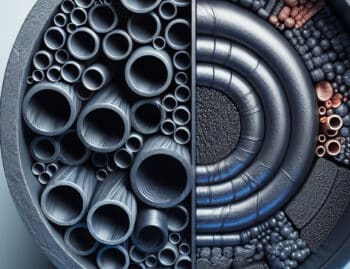
The Strength and Durability of Stainless Steel Pipe
Stainless steel pipe is renowned for its high tensile strength and durability. It can withstand extreme pressures and temperatures, making it an ideal choice for environments where other materials might fail. This strength translates to reduced risk of pipe bursts and leaks, ensuring the integrity of the entire system. For industries that operate in high-pressure conditions, the benefits are numerous since the material is engineered to withstand stresses that other metals cannot handle without significant risk of failure.
When it comes to choosing the best metal for high-pressure applications, stainless steel consistently proves superior. The robust nature of stainless steel pipes means they do not easily deform under high pressures, thereby maintaining structural integrity. Their resistance to physical wear and tear means fewer disruptions and maintenance requirements, which is a significant advantage in continuous operation environments such as power plants and refineries.
Moreover, the durability of stainless steel pipes can be attributed to advanced manufacturing processes such as heat treatment. Heat treatment enables the metal to attain its desired mechanical properties, improving its strength and toughness. This means that the stainless steel can endure prolonged exposure to high-pressure settings without succumbing to metal fatigue, making it the go-to choice for industrial use.
Resistance to Corrosion
One of the standout features of stainless steel pipe is its resistance to corrosion. Unlike other metals, stainless steel does not easily oxidize or corrode when exposed to harsh chemicals or moisture. This property ensures longevity, reducing the need for frequent maintenance and replacement. For industries dealing with corrosive substances, such as the chemical and petrochemical sectors, stainless steel piping is indispensable.
The chromium content in stainless steel creates a passive layer on the surface, offering excellent protection against rust and oxidation. This layer is self-healing, meaning any damage that exposes the metal initiates a reaction with the chromium to form a new layer, effectively providing continuous protection. This capability is particularly beneficial in applications involving constant exposure to hostile environments, thereby ensuring the pipes’ performance over extended periods.
Cost-Effectiveness
While the initial cost of stainless steel pipe might be higher compared to some alternatives, it proves to be cost-effective in the long run. Its durability and low maintenance requirements result in lower overall lifecycle costs. Industries save money on repairs, replacements, and downtime, making it a sound investment. The upfront spending is offset by the extended lifespan and reduced need for interventions, yielding financial benefits over time.
Furthermore, installing stainless steel piping systems can lead to significant savings in operational disruptions and labor costs. The ease of installation, the lightweight nature of stainless steel pipes, and their resistance to damage ensure that setups can be completed more quickly and with less manpower. This effectively reduces downtime and expedites project timelines, making stainless steel pipe a cost-effective choice from both financial and logistical standpoints.
High Thermal Conductivity
Stainless steel pipe has excellent thermal conductivity, allowing it to efficiently transfer heat. This characteristic is particularly beneficial in high-pressure environments where temperature regulation is critical. It ensures that systems run smoothly and safely, without the risk of overheating. For applications requiring precise thermal control—such as chemical processing and power generation—the thermal properties of stainless steel are invaluable.
In addition, the high thermal conductivity of stainless steel pipes reduces energy consumption, as heat is transferred more efficiently. This can lead to reduced operational costs and improved energy efficiency. The material’s ability to rapidly dissociate heat makes it an ideal choice for heat exchangers and boilers, where maintaining optimal temperatures is crucial for performance and safety.
Versatility and Wide Range of Applications
Stainless steel pipe is incredibly versatile and can be used in various industries, including oil and gas, chemical, and power generation. Its ability to handle high-pressure conditions makes it suitable for diverse applications, ensuring that industries rely on a single, robust material for their piping needs. This versatility translates to streamlined procurement and inventory processes, as businesses can rely on stainless steel piping for multiple uses.
Beyond industrial applications, stainless steel pipe is also used in residential plumbing and heating systems due to its reliability and ease of maintenance. Its non-reactive nature makes it safe for carrying potable water, further underscoring its broad functionality. High-pressure stainless steel pipes are even pivotal in the construction of infrastructure systems, offering the stability and longevity required in critical applications.
Conclusion
Stainless steel pipe offers unparalleled benefits in high-pressure environments, including exceptional strength, resistance to corrosion, cost-effectiveness, and high thermal conductivity. These attributes make it a reliable and long-lasting solution for various industrial applications, ensuring safety and efficiency.












